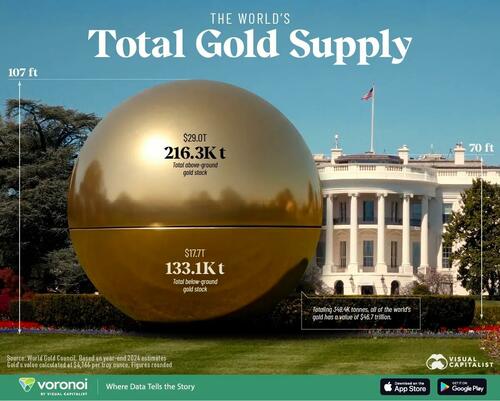Not so long ago, India embarked on a journey to strengthen its trade relations with several nations, forging FTAs that promised mutual benefits. These agreements opened doors to new markets, even though concerns about trade deficits have surfaced over recent years. Looking back, agreements with the ASEAN, Japan, and South Korea have significantly influenced India’s trade dynamics and have enriched its understanding of complex trade agreements..
The experience has been instrumental as India negotiated key agreements in the recent past, such as those with the UAE and Australia, reflecting the country’s adaptability in the evolving trade landscape. It is now poised to negotiate a potentially landmark FTA with the UK. This deal is critical, providing a window into India’s strategy for future western negotiations and its handling of non-trade issues like environmental and labour standards.
In the context of the UK negotiations, while the industry is optimistic about the prospect of eliminating tariff and non-tariff barriers for India’s export-intensive sectors, critical attention will be given to how it manages strategic trade-offs concerning dairy products, wines and spirits, electrical and electronic items, and the automotive sector’s tariffs and regulations. This will set the template for India’s future negotiation strategy, especially in the goods sector, which has historically been a key driver for countries to engage in FTA negotiations.
Furthermore, in the realm of services and regulatory alignments, India’s ability to persuade the UK to issue priority visas to Indian professionals, positive signals toward a social security agreement, a specific pharma annex simplifying the pharma market access, and duty derogation for Basmati rice, among other crucial asks, will be closely monitored. This FTA, if successfully concluded, will likely become the most comprehensive in India’s history, and the concessions and gains achieved here may set new benchmarks for other upcoming FTAs.
However, the global trade environment extends beyond bilateral deals. It is increasingly shaped by a multitude of factors – the pandemic’s influenced, geopolitical shifts, and an increased focus on domestic trade rules encompassing non-trade concerns.
A notable challenge for India will be the EU’s Carbon Border Adjustment Mechanism (CBAM), which threatens substantial levies on products like steel and aluminium, thereby potentially impacting India’s exports to the EU.
Having said that, strategies and measures that India has adopted prepares the country well for reaping the benefits India’s trade integrations efforts offer – after all the aim is to manufacture for the world and increase India’s exports. Four important measures, in this regard, include:
Investment in manufacturing: The Production-Linked Incentive (PLI) scheme is invigorating India’s manufacturing sector by strategically targeting 14 key industries, including electronics, automobiles, pharmaceuticals, and more. As a result, early signs of success are evident, especially in the electronics sector.
Increasing trade facilitation: The country has implemented various trade facilitation measures to combat high transaction costs and enhance the competitiveness of its exports. These measures and the digitalisation of business processes have streamlined cargo clearance, making it paperless and more efficient. These initiatives have led to improved customs administration and reduced cargo release times across multiple ports and customs stations.
Strong infra push: Over the last nine years, India has invested around USD7 trillion in new projects, driving an upswing in capital expenditures. Further, there has been an uptake in the construction of highways/roads with 10,457 kms of roads constructed in FY22 as compared to 6,061 kms in FY16. This is coupled with the capital expenditure on railways infra and the aim of achieving 100% electrification by 2024.
Policy uptick towards increased investments: Over the past few years, India has taken considerable efforts for liberalising its foreign direct investment regime and increasing efficiencies in tax systems (GST – which unifies India as a market; Faceless assessments – which reduces physical interface; Advance Ruling Authorities – for upfront clarity on tax and customs; etc.). This, coupled with introduction of a National Intellectual Property Rights Policy in 2016, which signifies that the effective enforcement of the IPRs as a focus area for the Government, reduces complexities in incoming investments and trade.
But is this enough? Arguably not, especially considering the challenges brought in by new trade directions charted by major economies – whether in the form of setting new regulations or in the form of bringing in innovative tariff barriers. That being so, what can India do to attain future readiness?
Policy clarity: This is key. India has come out with many tax and trade policies in the recent past. The aim is clear – to facilitate genuine investments and taxpayers. But, long-term clarity may be a miss. Recent flip-flop on import licensing for laptops is an indicator in this regard. The idea going forward is to clearly chart out policy plans for the next few years and implement them backwards, something similar to the action plans under India’s logistics and infra push!
Insight and agility: There is a need for clear strategy in response to global shifts, including recommendations for trade and associated regulations. Having clear insights (role of India’s Missions to the WTO, various countries, etc., important here) and swift analysis and response is a must to determine India’s stance. As an example, despite CBAM draft being discussed in various forms since 2019, there is not enough done to educate exporters, especially mid-sized steel exporters, about CBAM effects.
Pros and cons study: The idea is to have an unbiased study of India’s existing FTAs and to drive pros and cons, which helps our negotiators in upcoming negotiations. The analysis could be on economical, on supply changes, experiential, or geo-strategic lines, but should be clear and succinct.
New Delhi effect: While we all are aware of ‘Brussels effect’ – coined due to the EU’s lead in international trade regulations over past couple of decades. The idea is to go for furthering our policies in a manner which becomes a template for the less developed world. This would be righteous considering India’s unique positioning as a leader of this bloc in the WTO and other foras.
In conclusion, as India navigates international trade, it must leverage its past FTA experiences, evaluate the present trade landscape, and prepare strategically for future challenges to fulfill its economic ambitions and contribute meaningfully to global trade.
Gautam Khattar is principal, and Anurag Sehgal is executive director at Price Waterhouse & Co. LLP















